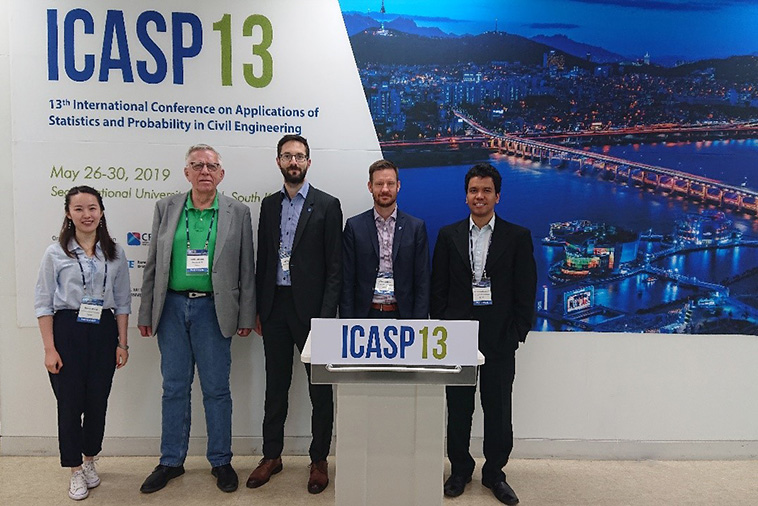Contributions to ICASP13 in Seoul, May 2019

The 13th International Conference on Applications of Statistics and Probability in Civil Engineering (ICASP13) was held in Seoul 26–30 May 2019. The Department of Civil and Architectural Engineering was represented by Ruoqi Wang , Davi Rodrigues Damasceno , John Leander and Johan Spross . The conference gave good opportunities to talk to other researchers on the latest developments in advanced simulation methods to assess risks.
The PhD candidate Ruoqi Wang, from the KTH Division of Structural Engineering and Bridges, presented her conference paper titled Comparison of simulation methods applied to steel bridge reliability evaluations. The presentation was held within the mini symposium “New Developments in Performance-Based Engineering Methodologies” and the conference paper is available as open access through the Seoul National University Library website “ S-Space ”. Ruoqi was confident and able to perform a very good clear and interesting presentation. Ruoqi’s PhD project on risk-based assessment of existing bridges is financially supported by the KTH Railway Group .
Ruoqi’s presentation was focused on the evaluation of crack propagation using fatigue deterioration for a bridge detail using both Monte Carlo Simulation and Subset Simulation. It has been observed that Subset Simulation was significantly more efficient that Monte Carlo Simulation with respect to calculation times for a highly non-linear and multi-dimension limit state function. The robustness of Subset Simulation was tested using 400 independent simulation runs for prior and updated reliability estimations showing good accuracy. The studied bridge includes several other fatigue details and a series system would have to be considered in future studies.
Davi Rodrigues Damasceno, a PhD student from the Division of Soil and Rock Mechanics, presented his paper with the title Effect of subset simulation in the design of lined rock caverns for storage of hydrogen gas . The research is part of the HYBRIT Research Project 1 and funded by the Swedish Energy agency. HYBRIT aims to replace coking coal, traditionally needed for ore-based steel making, with hydrogen. The result will be the world’s first fossil-free steel-making technology, with virtually no carbon footprint; read more at www.hybritdevelopment.com
The main idea of Davi’s paper is to evaluate the efficiency of Subset Simulation (SuS) regarding feasibility, accuracy and precision in the application of calculation of probability of failure against fatigue of the steel lining. The SuS showed good agreement with the result using Monte Carlo simulation and with greater precision for fewer number of samples. A case study was performed for the geologic conditions of Sweden, which, however, showed that failure by the presented model is unlikely. More approaches must be reviewed.
He presented in the mini symposium focusing on the field of geotechnical engineering, which matches his research very well, and provides the opportunities to have discussion or collaboration with other researchers over the world. And it was a successful presentation: As an audience, it was clear and easy to follow.

